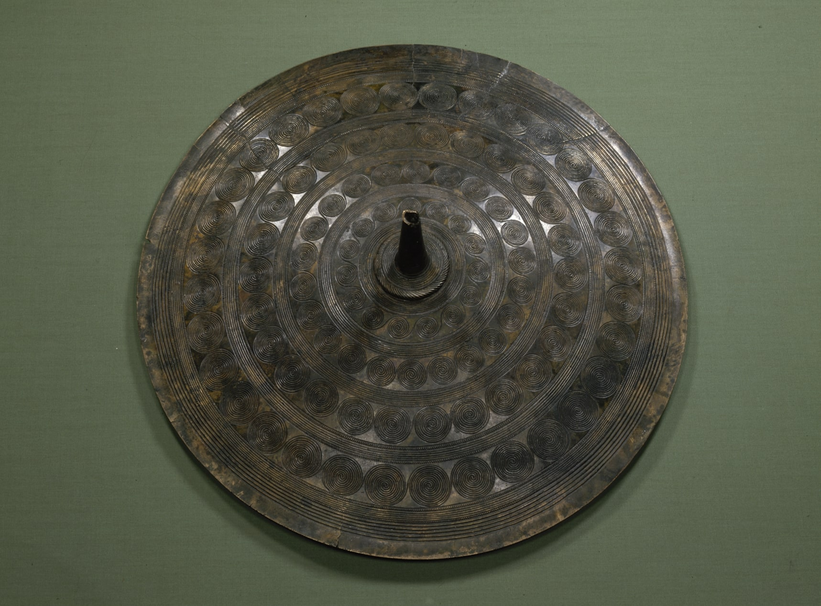The belt plate from Langstrup - a masterpiece
The belt plate from Langstrup is by its size of 28 cm in diameter, the larges known of all the belt plates from the Danish area. And by that, it is also one of the most beautiful performed pieces of work.
This is how the belt plate was created
Four concentric bands of continuous spirals, incredibly accurately completed, is bounded by zones with lines and short transverse bands. The belt plate is casted from an advanced technique where you start by building a wax model of the belt plate. This wax model was carefully punched with coils. The stamp consisted of a wire of copper or gold, which was probably put on a little wooden block. After the wax model was complete, it was brushed over with a thin clay mixture which was allowed to dry. Then the bronze caster surrounded the entire model with lean clay, which he burned. A mold of clay with an inter cavity had been created, and the wax had melted away during the heating. The bronze could now be poured into the cavity. After the bronze had solidified, the clay model was crushed. Thereafter, minor errors were corrected, and the surface was polished. The piece was finished.
This sounds relatively simple. But it is not. The best belt plates - like the one from Langstrup - are extremely thin. It is therefore very difficult if not impossible, to find a bronze cast today, who by this technique - called the 'lost wax' – from French à cire perdue - can produce such large and thin objects, where the liquid bronze quickly can be distributed in the quite narrow cavity created by melting away the wax.

The belt plate was produced in Denmark
There is no doubt that the belt plate from Langstrup is produced in what is now Denmark, probably not far from the finding place. It belongs to the period around 1400 BCE when the Bronze Age spiral style peaked. More or less complicated spiral patterns can be seen on many different objects from this period as swords, spearheads, axes, and not to forget the sun disc on The Sun Chariot.
The spiral is hardly invented in southern Scandinavia. The spiral idea came to Scandinavia through Central Europe, and most likely all the way from Greece. But it was only in the North that the spiral decorations was this popular and ubiquitous. Although the spiral decorations had its origin from far away, it was made 'our own', and used as decorations on northern objects.
